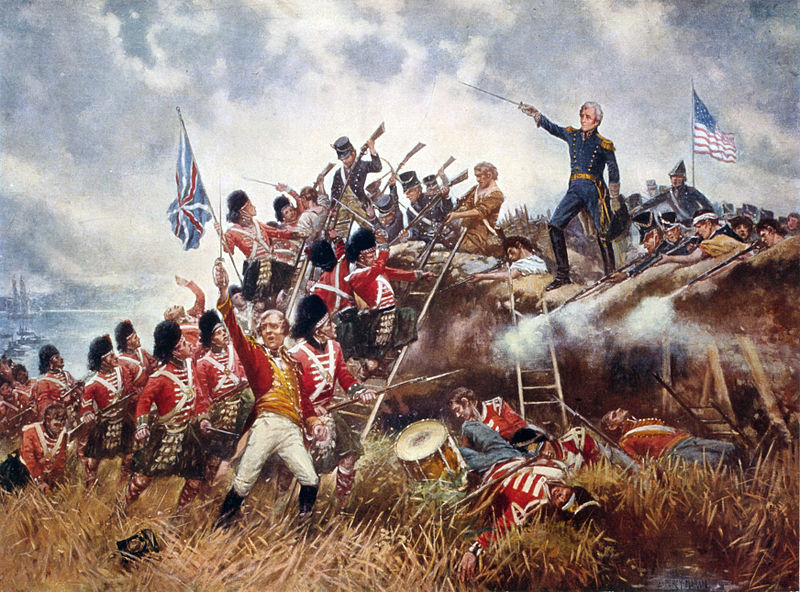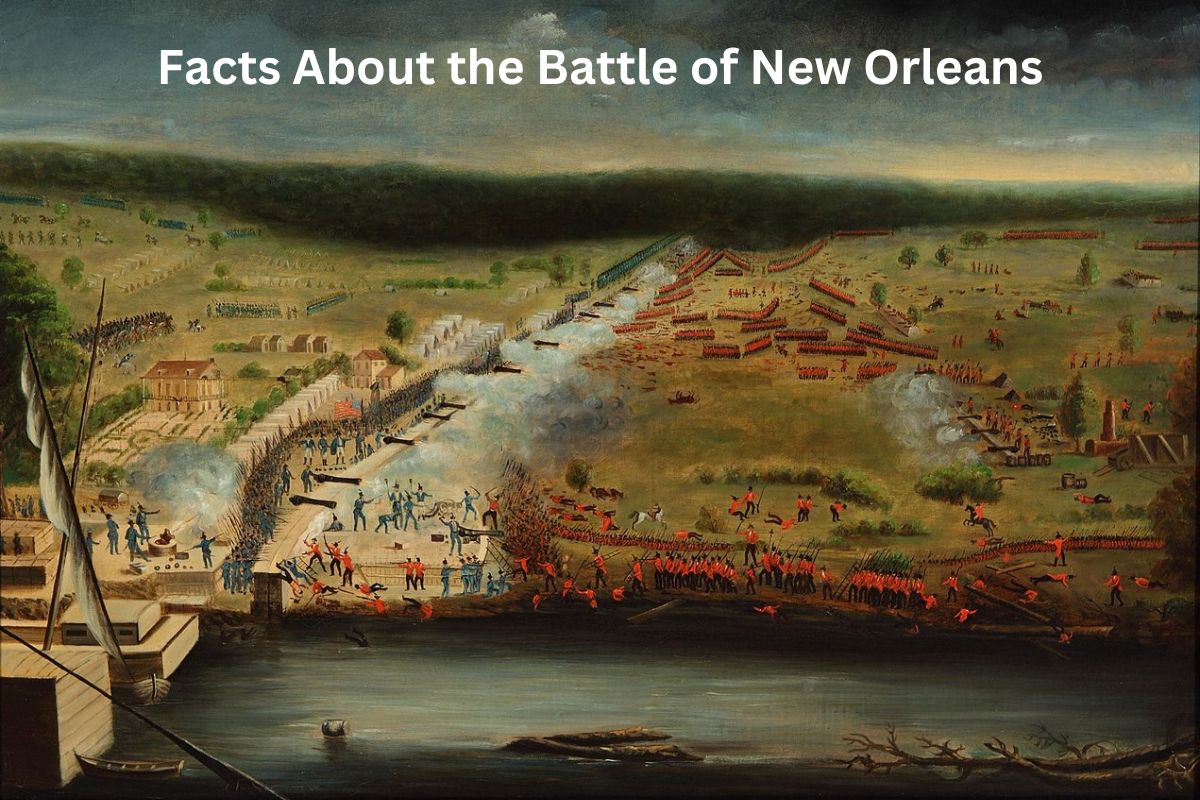The Battle of New Orleans was a pivotal event that took place from January 8 to January 18, 1815, during the War of 1812 between the United States and the British Empire. Fought on the outskirts of New Orleans, Louisiana, the battle became an iconic moment in American history and a significant turning point in the war.
Led by General Andrew Jackson, the American forces successfully defended against a powerful British army commanded by General Edward Pakenham.
Despite occurring after the signing of the Treaty of Ghent, which ended the war, the battle showcased American resilience, military prowess, and diverse cooperation among various fighting groups, including regular soldiers, militia, free African Americans, Native Americans, and even pirates like Jean Lafitte and his Baratarians.
The American victory at the Battle of New Orleans not only bolstered national morale but also propelled Andrew Jackson into the national spotlight, setting the stage for his future presidency.
Today, the Chalmette Battlefield and National Cemetery preserve the memory of the battle, offering visitors a chance to learn about this historic event and its lasting impact on American history.
The Battle of New Orleans Facts
1. The Battle of New Orleans took place from January 8 to January 18, 1815
The Battle of New Orleans took place from January 8 to January 18, 1815, during the War of 1812. The War of 1812 was a conflict between the United States and Great Britain, primarily fought over issues such as trade restrictions, British impressment of American sailors, and territorial disputes. The battle occurred towards the end of the war and had a significant impact on its outcome.

2. It was fought between the United States and the British Empire
The battle was fought between the United States and the British Empire. The American forces were led by General Andrew Jackson, a seasoned military leader who would later become the seventh President of the United States.
Also Read: Timeline of the War of 1812
Jackson was known for his aggressive tactics and strategic thinking. On the British side, General Edward Pakenham commanded the forces. Pakenham came from a prestigious military family and was a respected British general.
3. The battle occurred after the signing of the Treaty of Ghent
The battle took place after the signing of the Treaty of Ghent on December 24, 1814. The treaty had been negotiated to end the war, but news of its signing had not yet reached the combatants.
Therefore, both sides continued fighting unaware that peace had been achieved. The Battle of New Orleans became one of the final major engagements of the war.
4. Despite the war being effectively over, both sides continued fighting for strategic reasons
The British sought to capture New Orleans because they wanted to gain control of the Mississippi River and the surrounding territory. By securing New Orleans, the British hoped to establish a strong foothold in the region and cut off American access to the river, which was vital for trade and transportation.
Control over the Mississippi would have severely impacted American commerce and limited westward expansion.

5. Andrew Jackson’s forces consisted of a diverse group
Andrew Jackson’s forces consisted of a diverse group of fighters. In addition to regular soldiers, he commanded a mix of militia, free African Americans, Choctaw warriors, and pirates led by Jean Lafitte and his Baratarians.
Lafitte was a French-American pirate who had established a smuggling operation in the Gulf of Mexico. He and his men joined forces with Jackson and played a significant role in the battle, providing artillery support and utilizing their sharpshooting skills.
The involvement of Lafitte and his pirates added a unique element to the American forces and contributed to their success in the battle.
6. The American defenses were positioned along a canal called Rodriguez Canal
The American defenses during the Battle of New Orleans were strategically positioned along a canal called Rodriguez Canal. General Jackson ordered his troops to construct earthworks and fortifications to strengthen their defensive positions.
The canal itself served as a natural barrier, while the American soldiers built additional breastworks and redoubts to provide cover and protection. To enhance their fortifications, the Americans also utilized a line of cotton bales, which were stacked and positioned as an extra layer of defense against British gunfire.
7. The British launched a frontal assault on January 8, 1815, but their attack was repelled with heavy casualties
On January 8, 1815, the British launched a frontal assault on the American positions. General Pakenham believed that a direct attack would quickly overwhelm the American defenses. However, the British faced several challenges.
The American forces had the advantage of superior defensive positions, which allowed them to effectively repel the British assault. Furthermore, the American troops were skilled marksmen armed with rifles, while the British primarily relied on muskets with shorter range and less accuracy.
The combination of strong fortifications and accurate rifle fire inflicted heavy casualties on the British forces.
8. General Pakenham was killed during the battle, which significantly demoralized the British troops
General Edward Pakenham, the British commander, was killed during the Battle of New Orleans. Pakenham led his troops in a bold but ultimately ill-fated attempt to break the American lines. As he rode forward to rally his soldiers, he was struck by gunfire and mortally wounded.
Pakenham’s death greatly demoralized the British troops and further hindered their chances of success in the battle. The loss of their commander, coupled with the failure of their frontal assaults, contributed to the British decision to withdraw from the battlefield.
9. The Battle of New Orleans was a decisive American victory
The Battle of New Orleans resulted in a decisive victory for the Americans. The British suffered significant casualties, with estimates ranging from around 2,000 to over 2,500 killed, wounded, or captured. Among the British losses were numerous officers, including General Pakenham.
In contrast, the American losses were relatively light, with approximately 70 soldiers killed and 350 wounded. The lopsided casualty figures underscored the effectiveness of the American defensive positions and their skilled marksmanship.
10. The battle is famous for the participation of pirate Jean Lafitte and his Baratarians
Jean Lafitte and his Baratarians, a group of pirates and privateers, played a notable role in the Battle of New Orleans. Lafitte, who commanded a base in Barataria Bay, Louisiana, had initially been engaged in smuggling and illegal activities.
However, when the British approached Lafitte and offered him a pardon in exchange for his assistance, he decided to side with the Americans. Lafitte and his men brought artillery support to the American forces and utilized their sharpshooting skills during the battle. Their involvement proved crucial in repelling British attacks and contributing to the American victory.
The cooperation between Andrew Jackson’s forces and the Baratarians demonstrated the diverse and unconventional nature of the American defenders and showcased the importance of Lafitte’s pirate group in the outcome of the battle.
11. The victory at the Battle of New Orleans boosted American morale and had significant political ramifications
The Battle of New Orleans had significant political ramifications. The American victory boosted national morale and instilled a sense of pride and patriotism. Andrew Jackson, who emerged as a hero from the battle, gained widespread recognition and popularity, which helped propel his political career.
Jackson’s success in defending New Orleans played a crucial role in establishing his image as a strong military leader, eventually leading to his election as the seventh President of the United States in 1828.
12. The battle also highlighted the significance of Andrew Jackson’s leadership skills
The battle showcased Andrew Jackson’s exceptional leadership skills. He effectively organized and commanded a diverse group of fighters, including regular soldiers, militia, free African Americans, Native American allies, and even pirates.
Jackson’s ability to unite and lead such a varied force was instrumental in achieving victory. His strategic decisions, such as fortifying defensive positions and utilizing skilled marksmen, demonstrated his tactical acumen and ability to make critical judgments under pressure.
13. The Battle of New Orleans is sometimes referred to as the “Glorious 8th”
The Battle of New Orleans is often referred to as the “Glorious 8th” due to the American victory on January 8, 1815. This date holds particular significance as it marked a decisive turning point in the battle and became a symbol of American resilience and triumph. The term “Glorious 8th” emphasizes the pride and celebration associated with the battle’s outcome.
14. Despite occurring after the war had ended, the battle played a significant role in shaping the perception of American military power
The Battle of New Orleans, despite taking place after the official end of the War of 1812, played a crucial role in shaping the perception of American military power and bolstering the nation’s confidence.
It became an iconic event in American history, often cited as a testament to the determination and resourcefulness of the American people. The battle highlighted the capacity of the United States to defend its interests and fend off formidable adversaries, further solidifying the nation’s reputation on the world stage.
15. Today, the site of the battle is preserved as the Chalmette Battlefield and National Cemetery
Today, the site of the Battle of New Orleans is preserved as the Chalmette Battlefield and National Cemetery, managed by the National Park Service. Visitors can explore the battlefield, which features exhibits, monuments, and interpretive displays that provide insights into the battle and its historical significance.
The Chalmette National Cemetery, located within the park, serves as the final resting place for American soldiers who fought in various conflicts, including the Battle of New Orleans. The preservation of this site ensures that the memory and impact of the battle are remembered for future generations and underscores its enduring importance in American history.
